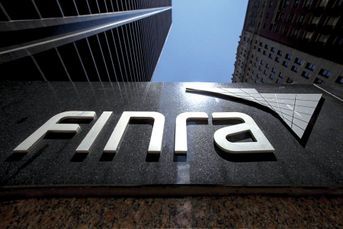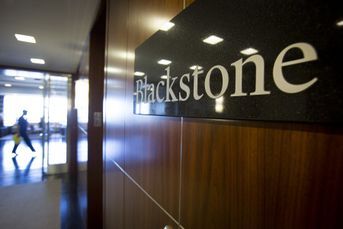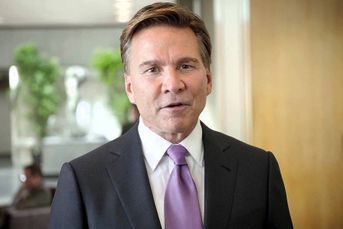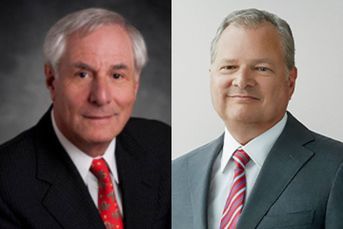Once-mighty nontraded REIT sponsor Inland Real Estate Investment Corp. plots a comeback
Mitchell Sabshon plots a course for nontraded REIT sponsor Inland Real Estate Investment Corp. to recreate its prior success.
Nontraded real estate investment trusts are booming, but Inland Real Estate Investment Corp., which led all its competitors just six years ago, is no longer much of a force in the industry.
Inland’s two biggest nontraded REITs have performed poorly, and the broker-dealers and registered representatives who sold its REITs at one time now shun it; other, more nimble competitors have grabbed the industry spotlight.
Although Inland was once a fundraising powerhouse, its ability to raise money in the nontraded-REIT market has slowed to all but a trickle.
Consider that from 2005 to 2007, Inland sold $7.4 billion in its nontraded REITs, or 31% of the $23.9 -billion raised by the entire industry, according to investment bank Robert A. Stanger & Co. Inc. By comparison, in 2013, Inland raised just $63 million, or less than 1% of the total $19.6 billion raised by the industry, according to Stanger.
Inland would like nothing more than to regain its past luster. Last summer, it hired the chief operating officer of a competitor, Cole Real Estate Investments, to be its new chief executive. But even the new CEO, Mitchell Sabshon, admits that turning Inland around will be an uphill climb.
Not only will Inland have to overcome its recent history of poorly performing nontraded REITs and win back the support of broker-dealers and their financial advisers, it is facing steep competition from the likes of American Realty Capital. ARC is now the industry leader, rewriting the rules of the industry by returning money to investors through liquidity events much faster than in the past.
“Clearly, the industry has changed in terms of liquidity events,” Mr. Sabshon said. “It will take time to generate the performance and restore confidence.”
WEAK SHOWING
Advisers, broker-dealer executives and analysts point to the weak showing of two giant REITs, Inland American Real Estate Trust and Retail Properties of America Inc., formerly the Inland Western Retail Real Estate Trust, as the reason for the market’s current rejection of Inland.
“I wish I had never touched this stuff,” said Michael Eugenio, an investment adviser rep in Lake Oswego, Ore., who sold $150,000 of Inland American and $100,000 of Retail Properties of America.
The former has lost about 30% of its original offering price, and the latter needs to appreciate about 50% to recover its initial cost, he said.
“I called Inland in 2008 when the world was coming to an end, and the wholesaler said, “Don’t worry, it’s real estate and it always comes out fine,’” said Mr. Eugenio, who manages about $15 million in client assets.
To allay the adviser’s fears, the wholesaler further touted Inland’s management, which had been investing in real estate since the 1960s, Mr. Eugenio said.
“The message was, “Go sell some more,’” he said.
Mr. Sabshon said that he isn’t surprised that an Inland wholesaler may have minimized the market downturn back in 2008.
“The truth is, there were very few people globally or in the United States who truly appreciated the impending severity of the global market downturn and the impact on assets, be they stocks, bonds or real estate,” he said.
The timing of decisions by the two Inland REITs, particularly buying commercial real estate at the market’s height, was disastrous.
Inland American and Inland Western were sold at $10 a share, the industry’s standard pricing structure.
Launched in 2004, Inland American raised $8.9 billion in equity, the most ever for a nontraded REIT.
Its net asset value at the end of September was $6.95 a share.
That translates into a $2.6 billion decline in equity value, according to the Securities Litigation and Consulting Group Inc.
Inland Western was launched in 2003 and raised $4.9 billion in equity.
When it went public in 2012 and re-christened itself Retail Properties of America, the REIT’s equity value had dropped to $1.7 billion, or about $3.40 a share, according to the Securities Litigation and Consulting Group.
The first shock wave from Inland to hit advisers and broker-dealers was the decision to cut dividends in 2009. Nontraded REITs often are sold to investors in need of income from a dividend.
Inland American first cut its dividend in January 2009 to an annual rate of 50 cents a share, from 62 cents. In the same year, Inland Western cut its annual dividend to 18 cents a share, from 64 cents a year earlier.
Ameriprise Financial Services Inc., one of the largest sellers of nontraded REITs and a former Inland distributor, stopped selling its nontraded REITs.
Although Inland faces difficulties in the independent-broker-dealer market, it still has its supporters.
Inland still has a selling agreement with LPL Financial, the largest independent broker-dealer in the country, Mr. Sabshon said.
“Inland is pedigree as far as we are concerned,” said Jeff Young, senior vice presidents of investments with First Financial Equity Corp., an independent broker-dealer.
He acknowledged that newer REIT sponsors such as ARC and Cole benefited from the timing of launching REITs after the collapse of 2008 when real estate was at its lows.
“Inland is an older company and may have got a little lazy, but these guys deserve another chance,” Mr. Young said. “I don’t want to see the industry dominated by a few players.”
Inland Real Estate Investment is part of the privately held Inland Real Estate Group of Cos., which generated more than $2 billion in revenue last year with 1,463 employees. The company doesn’t break out the percentage of revenue contributed by Mr. Sabshon’s unit, which is essential to the company because it is the capital-raising arm for the overall enterprise.
The key to Inland’s turnaround may be its ability to deliver on liquidity events sooner.
Nonlisted REITs originally were embraced as long-term investments and were expected to be held for five to six years, with some sponsors anticipating 10 years. The newer sponsors, such as ARC and Cole, are returning principal to investors in as little as four years.
‘RETURN CAPITAL’
The intention at Inland is to “return capital far sooner than later,” Mr. Sabshon said.
He noted that one Inland REIT, Inland Diversified Real Estate Trust Inc., last month said that it had agreed to merge with Kite Realty Group Trust, a listed REIT.
The roughly $2 billion deal kicked off a steady 6% dividend and will allow most Inland Diversified investors to cash out at a small gain.
Meanwhile, investors in Inland American are wondering if they are on the verge of a liquidity event a decade after the REIT was originally sold.
In January, the REIT told its investors that it was suspending its share buyback program, which may indicate a pending merger or listing.
“The outcome for Inland American and how that is received will be very important to them over the next couple of months,” said Kevin Gannon, president and managing director of Robert A. Stanger, which works with Inland and other REIT sponsors.
“Should they come back? Yes, but they will have to earn it, and Mitch is the guy to do that.”
Mr. Sabshon has a game plan.
Along with developing REIT products for retail advisers with clearer exit strategies, he is focused on building Inland’s institutional business.
Targeting pension funds, endowments, family offices and other institutions, he wants to raise capital in commingled private-real-estate funds that would invest in retail, multifamily and net-lease commercial real estate. Mr. Sabshon also wants to increase the separate-account business for single institutional investors.
In addition, he intends to expand Inland’s platform to use outside managers to create and sell subadvised REITs and real estate funds to supplement the company’s offerings.
One potential subadvised REIT would be a mortgage REIT, Mr. Sabhson said.
He also wants to cut management fees and instead use a performance fee to compensate REIT managers.
Mr. Sabshon acknowledged that Inland American’s outcome will have a big impact on its immediate future.
He said he speaks often with Ameriprise executives, for example, particularly about potential new products such as a subadvised REIT.
Inland hasn’t launched such a REIT.
“We will talk again” with Ameriprise, Mr. Sabshon said.
“Their position is fair. I’m a big believer in “put up or shut up,’” he said.
Learn more about reprints and licensing for this article.








